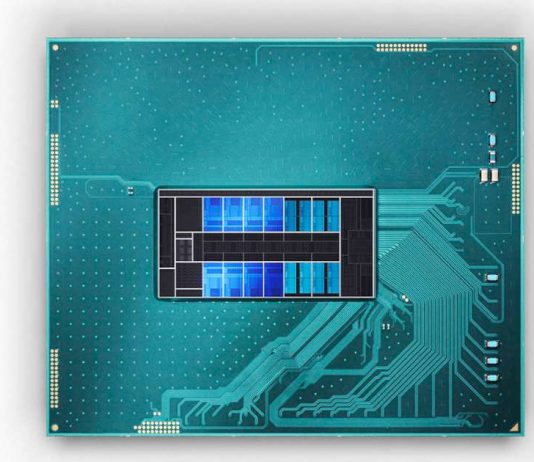Intel has introduced its 13th generation of mobile processors, known as the Raptor Lake series. This new range includes four different series:
- Raptor Lake-HX, designed for gaming laptops and featuring the most powerful chips
- Raptor Lake-H, also for gaming laptops but with slightly less powerful chips
- Raptor Lake-P, designed for high-performance thin laptops
- Raptor Lake-U, featuring less powerful chips for thin laptops.
One key feature of the Raptor Lake series is its hybrid architecture, which combines the powerful Raptor Cove P-cores with the energy-efficient Gracemont E-cores. This allows for a range of processors with different levels of power and efficiency, with the most productive models featuring up to eight P-cores and 16 E-cores, and up to 32 threads. The new platform also supports up to 16 PCIe 5.0 lanes and up to 128GB of DDR5-5600 (as well as DDR4-3200) RAM.
Raptor Lake-HX series
The Raptor Lake-HX series is particularly noteworthy, as it features 13th-generation Core desktop chips adapted for use in laptops. This involves limiting the TDP (Thermal Design Power) level and maximum consumption and reducing operating frequencies to adapt the chips for laptop use. The series includes processors with anywhere from 10 to 24 cores, with maximum clock speeds of 5.6 GHz in Turbo mode for P-cores and integrated graphics with up to 32 execution units and a frequency of up to 1.65 GHz.
Intel has claimed that the new Core-HX processors are up to 12% faster than their Alder Lake-HX predecessors in games, although it is worth noting that the comparison is between the Core i9-12900HX and Core i9-13950HX, which may not be entirely equivalent. Intel also claims a significant increase in performance for professional applications, particularly in rendering, and states that the Raptor Lake-HX chips are even further ahead of competitors such as AMD’s Ryzen 6000 processors.
The Raptor Lake-H, Raptor Lake-P, and Raptor Lake-U series are all built on mobile chips, with the Raptor Lake-H offering up to 14 cores, 24MB of L3 cache, and up to 96 EU integrated Intel Iris Xe graphics running at up to 1.5 GHz. Many models in this series also support faster RAM, up to LPDDR5X-6400.
The Raptor Lake-P series includes just four models, three with 12 cores and one with 14 cores, and features a maximum frequency of 5.2 GHz and a standard TDP of 28 watts.
The Raptor Lake-U series offers a range of processors from 5 to 10 cores, with maximum frequencies of up to 5.2 GHz and a TDP of 15 watts.
All of the 13th Gen Intel Core mobile processors support Wi-Fi 6E, Bluetooth LE Audio, and Thunderbolt 4, which includes DisplayPort 2.1 support addition. The Raptor Lake processors have received Endurance gaming technology to extend battery life. Some chips include a discrete AI accelerator called Movidius VPU for noise reduction and webcam image enhancement.
In addition to the four main Raptor Lake series, Intel is also relaunching its entire portfolio of notebook CPUs for CES 2023, with the HX, H, P, and U series being updated in parallel for the first time. While the base for most of these updates is the Alder Lake architecture, the Raptor Lake series does offer some new options, particularly in the HX series, which brings 24 cores to the notebook for the first time.
It is worth noting that some sources have referred to the 13th generation Core mobile processors as the “Alder Lake Refresh” rather than the Raptor Lake series. This may be because the new chips are based on the Alder Lake architecture, or it may simply be a matter of branding. Either way, the new processors offer significant improvements and new features, including hybrid architecture and support for the latest connectivity standards.
Overall, the Raptor Lake series appears to be a strong addition to Intel’s lineup of mobile processors, offering a range of options for different types of laptops and various performance levels. With over 250 laptops featuring the new chips expected to be released in 2023, it will be interesting to see how the Raptor Lake processors compare to their competitors in the market.


